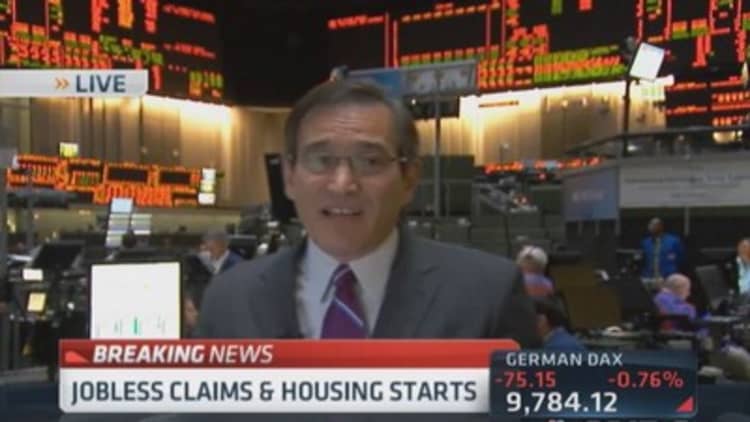The number of Americans filing new claims for unemployment benefits unexpectedly fell last week, suggesting the labor market recovery was gaining traction.
However, a separate report showed U.S. housing starts and building permits unexpectedly fell in June, suggesting the housing market recovery was struggling to get back on track after stalling in late 2013.
Initial claims for state unemployment benefits dropped 3,000 to a seasonally adjusted 302,000 for the week ended July 12, the Labor Department said on Thursday.
The prior week's claims were revised to show 1,000 more applications received than previously reported. Economists polled by Reuters had forecast first-time applications for jobless aid rising to 310,000 last week.
The four-weak average of claims, considered a better gauge of labor market trends as it irons out week-to-week volatility, fell 3,000 to 309,000, the lowest level since June 2007.
Claims tend to be volatile around the period after the July 4 holiday, when automakers normally shut down plants for retooling. A Labor Department analyst, however, said there were no special factors influencing the state level data.
The claims data covered the survey week for July nonfarm payrolls. Claims fell 12,000 between the June and July survey period, suggesting another month of solid job gains after June's hefty 288,000 increase.
Employment has grown by more than 200,000 jobs in each of the last five months, a stretch not seen since the late 1990s.
Federal Reserve Chair Janet Yellen cautioned on Tuesday the Fed could raise interest rates sooner and more rapidly than currently envisioned if the labor market continued to improve faster than anticipated by policymakers.
Economists currently do not expect the U.S. central bank to start raising interest rates before the second half of 2015. The Fed, which is wrapping up its monthly bond buying program, has kept overnight lending rates near zero since December 2008.
The claims report showed the number of people still receiving benefits after an initial week of aid fell 79,000 to 2.51 million in the week ended July 5, the lowest level since June 2007.
The unemployment rate for people receiving jobless benefits fell one-tenth of a percentage point to 1.9 percent during the same period.
Housing starts swoon

Groundbreaking declined 9.3 percent to a seasonally adjusted annual 893,000 million unit-pace, the lowest since September, the Commerce Department said. April's starts were revised to show a steeper 7.3 percent fall instead of the previously reported 6.5 percent drop.
Economists polled by Reuters had forecast starts rising to a 1.02 million-unit rate last month.
Housing has been constrained by higher mortgage rates. A shortage of properties for sale has pushed up prices, reducing affordability for many.
But there are glimmers of hope for the sector. A survey on Wednesday showed confidence among single-family home builders hit a six-month high in July, amid optimism over sales over the next six months.
Groundbreaking for single-family homes, the largest part of the market, tumbled 9.0 percent in June to a 575,000-unit pace, the lowest since November 2012. Single-family starts in the South dropped to their lowest level in two years.
Starts for the volatile multi-family homes segment dropped 9.9 percent to a 318,000-unit rate.
Permits fell 4.2 percent to a 963,000-unit pace in June. Economists had expected them to rise to a 1.04-million unit pace. With permits now leading starts, groundbreaking could pick up in the months ahead.
Permits for single-family homes increased 2.6 percent to a 631,000 unit-pace, the highest level since November. Permits for multi-family housing tumbled 14.9 percent to a 332,000-unit pace.
--By Reuters

